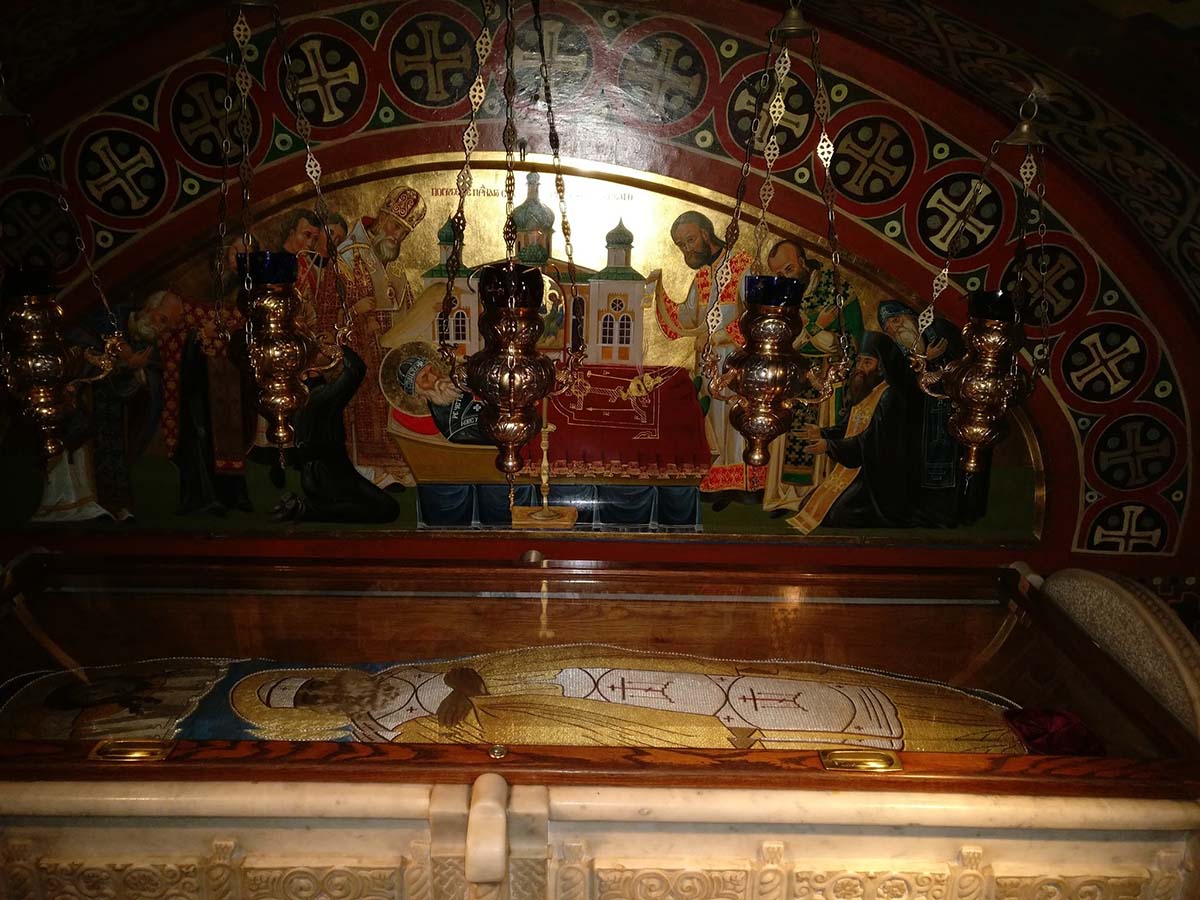The Holy Trinity Monastery of John is located in the ancient part of Kyiv on the hill of Zverinetskaya Mountain. From the hills there is a view of the wide flood of the Dnieper and the Chernigov forests stretching beyond the horizon, the place of which has now been taken by residential areas of the left bank of Kyiv. There is a legend that the first enlightener of Rus’, Apostle Andrew the First-Called, visited here. Here, the grandson of St. Vladimir, Grand Duke Vsevolod Yaroslavovich, built a church in the name of Archangel Michael in 1071, and above, on the top of the highest mountain in Kiev, he built his princely “Red Court”. Near it, the prince loved to organize hunts for wild animals, which is where the whole area got its name – the Menagerie.
People have been talking about the fact that Zverinetskaya Mountain is a special place for a long time. Either they saw pillars of fire on it reaching to the sky, or a large spill of water – “not running and standing like a wall of one and a half arshins in one place.” And in the memoirs of St. Theophilus of Kiev, Christ the Fool for the Fool (who died in 1853), there is a story that, driving from Kitaevskaya Hermitage in Lavra, his bull stopped on Zverinetskaya Mountain, rooted to the spot. “To be here is a great holy monastery,” said St. Theophilus then.
Silver poplars, sycamores, spreading oaks and fragrant lindens with wild apple trees and pears in the meadows – this is how the resident of Vydubitsky Monastery saw these places Hieromonk Jonah when he settled on Zverinetsky Mountain in 1860. Standing out for his experience and pious life, he quickly became famous among the people of Kiev, and many sought an opportunity to receive advice and guidance from him. Ion wanted to build a temple at his place of residence, but did not have the money for it, when suddenly one of the elder’s spiritual daughters, Princess Ekaterina Vasilchikova, wife of the Governor General of Kiev Vasilchikova, drew up a deed of gift for her dacha in favor of the future monastery and donated 10,000 rubles for its improvement. However, the monastery could only be established by the Emperor of Russia. Having secured the support of Moscow Metropolitan Philaret, Vasilchikova travels to St. Petersburg. In the capital, the princess’s request to establish a new monastery in Kyiv was opposed by some courtiers and part of the priesthood. The Tsar, tired of bickering and conflicting opinions, postponed the resolution of this issue until better times and went out for a walk in the Summer Garden. It was then that the terrorist Karakozov attempted to assassinate Alexander II. He shot at the emperor at point-blank range, but the bullet went to the side. Shocked, Alexander quickly returned to the palace and said in front of everyone: “What, gentlemen, is there no need for a monastery? And I see that God’s providence and the prayers of the new monastery saved me from death, and Russia from a terrible shock,” and signed a petition to establish a new monastery. By the same decree, Father Jonah was appointed rector, and already in 1871 the construction of a stone church with two chapels was completed.
In 1918, the monastery was damaged when the artillery cellars located next to it in the Kyiv fortress exploded. The shells reached Trukhanov Island and Podol. Explosions and fires destroyed hundreds of houses on the Menagerie and most of the monastery’s buildings. Part of the second and first tiers of the bell tower under construction was demolished. There was no question of restoration; it was dismantled down to the last brick. In 1928, the rector of the monastery, Archimandrite Yuvenaly, was arrested. Following this, the monastery at Zverinetsky Caves was closed by a special resolution of the Kyiv City Council, and its rector – Archimandrite Philaret – sent to a concentration camp. In 1934, the Church of the Holy Trinity was closed, and the remaining monks were exiled to Kazakhstan. From 1942 to 1949, monastic life was restored, but then, for more than 40 years, the most difficult period in the history of the monastery began – most of the monks, together with the abbot, were transferred to the Kiev Pechersk Lavra, and some of them had to hide in the world. In 1966, the crypt in which the incorruptible relics of St. Jonah rested was blasphemously opened. After it became known about the desecration committed against the holy relics, the monks of the Kiev Pechersk Lavra, which was not yet closed at that time, took them out of the temple and reburied them at the Zverinetsky cemetery. The monastery stood orphaned and dead, but the monastery tower clock, made in 1858 in Paris, did not stop its movement for a second – this is still the case today, moreover, these clocks became the oldest in Kiev, which were preserved and even in working condition.
The modern history of the Holy Trinity Monastery began in 1991, when services began to be held near the dilapidated church. And on October 4, 1993, with the blessing of the Metropolitan of Kyiv and All Ukraine of the region of Vladimir, the saints and incorruptible relics of St. Jonah were transferred from the Zverinetsky cemetery to the cathedral church at their original resting place. By the beginning of the 2000s, the main temple of the monastery – the Holy Trinity Church, the bell tower, the clock tower – was restored, and the fraternal buildings were rebuilt.
Where is the Holy Trinity Monastery of Jonas?
Timiryazevskaya street, 1 (in the territory of Grishko Botanical Garden , at the entrance you need to say that you are going to the temple – pilgrims are allowed in for free)
(044) 284-95-93




